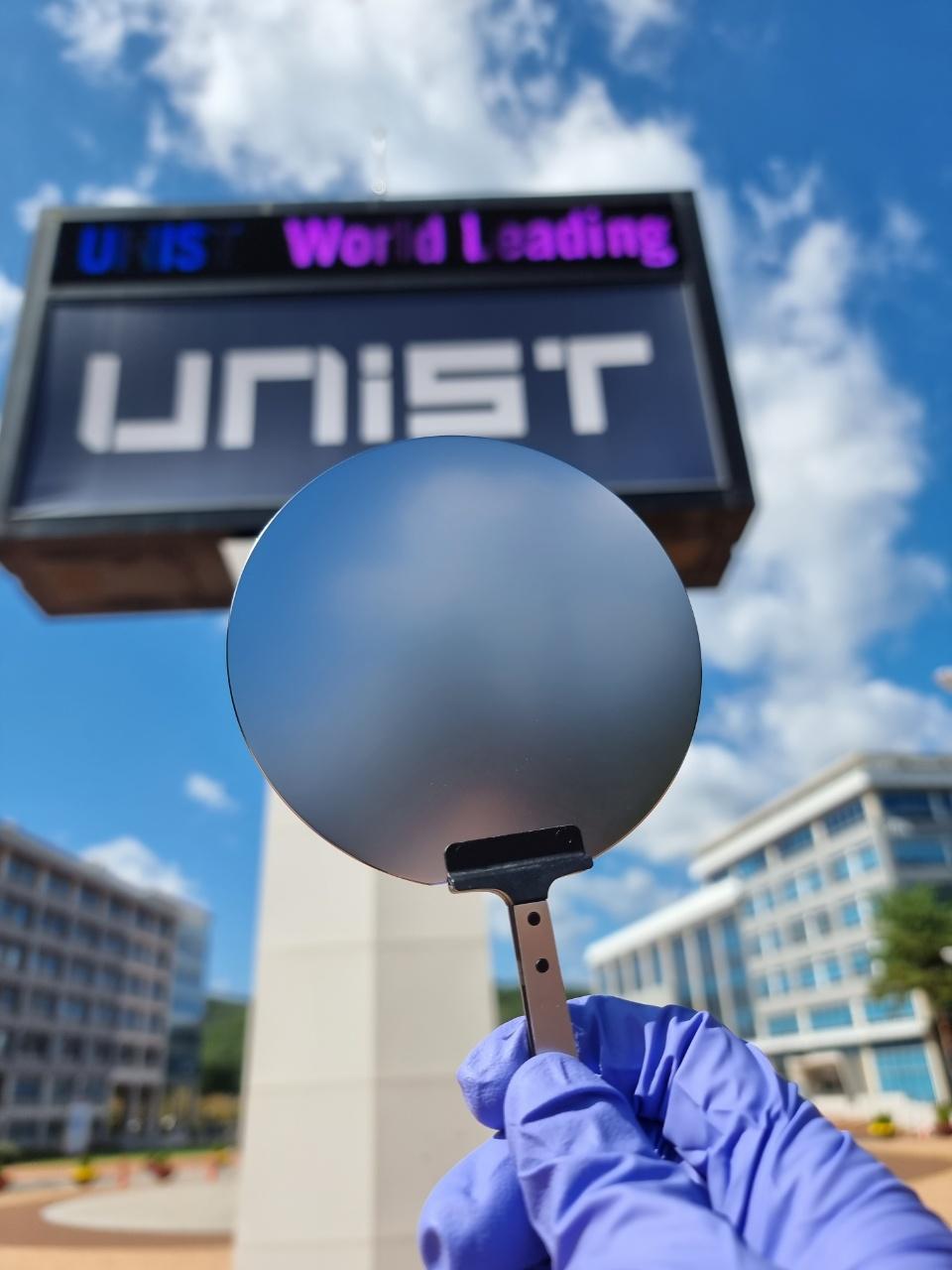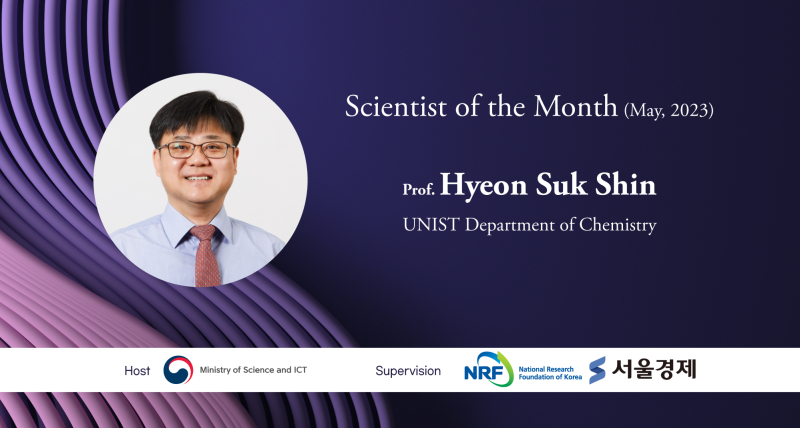Professor Hyeon Suk Shin in the Department of Chemistry at UNIST bestowed with the Scientist of the Month Award for May 2023, presented by the Ministry of Science and ICT (MSIT) and the National Research Foundation of Korea (NRF). Professor Shin will be also given 10 million won in prize money.
This award has been established to promote the morale of science and technology people by discovering and rewarding those who have contributed to the development of science and technology with excellent research and development achievements.
Professor Shin has been evaluated as contributing to laying the foundation for innovation in nano-scale semiconductor process technology by developing the synthesis method for fabricating an ultra-low dielectric material, a core technology for ultra-fine and high-integrated semiconductors.

The picture shown above shows the deposition of ultra-low dielectric material by Professor Shin on a 4-inch silicon wafer. l Image Credit: Professor Hyun Suk Shin (Department of Chemistry, UNIST)
Traditionally, the performance of each semiconductor depends on the switching speed of the transistor. However, as semiconductor devices become smaller and more highly integrated, RC delays that occur in the circuit wiring determine overall chip performance.
Accordingly, to increase the signal processing speed, a technology to lower the permittivity of a dielectric material sandwiched between two metal plates is required. As such, the ultra-low dielectric material is key to lowering relative permittivity.
Through a recent study, Professor Shin and his research team revealed that amorphous boron nitride films has ultra-low-k (relative permittivity around 1.89), and thus can be applicable for both memory semiconductors and system semiconductors. They team further succeeded in synthesizing approximately three-nanometre-thick a-BN films, using a chemical vapour deposition (CVD) method. In this study, the research team demonstrated a-BN films with ultralow κ values of less than 2.0 and this is 30% lower than that of porous organic silicate materials (2.5).
Published in the June 2020 issue of Nature, their findings further confirmed that this a-BN films with ultra-low-k also manifests a high breakdown voltage and likely superior metal barrier properties, making the film very attractive for practical electronic applications.
In addition, the research team developed a single-crystal hBN synthesis method that can control the number of layers of thin films using hexagonal boron nitride (hBN), and proposed a large-area solution for semiconductor materials. Their findings have been published in the June 2022 issue of Nature.














